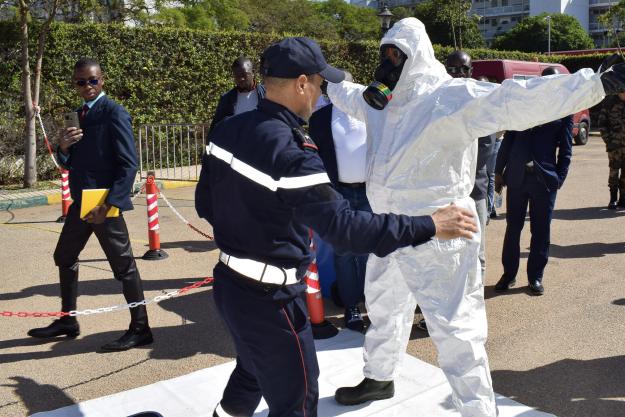Thirty responders from French-speaking African countries were trained on protection against chemical weapons during a course held from 27 February to 3 March in Rabat, Morocco. The course was co-organised by the Organisation for the Prohibition of Chemical Weapons (OPCW) and the Government of the Kingdom of Morocco.
Participants received training on protection, detection, identification and decontamination procedures of chemical weapons and toxic industrial chemicals. The course is a capacity-building initiative within the framework of Article X of the Chemical Weapons Convention to support OPCW Member States in the region, and to strengthen their capacity in responding to incidents involving chemical warfare agents and toxic industrial chemicals.
The course was designed for both civilian and military first chemical emergency responders, including civil defence, fire/rescue departments, police, military CBRN defence units, professionals dealing with hazardous materials, medical responders.
The course was attended by 30 participants from seven OPCW Member States: Burkina Faso, Cameroon, Cote d'Ivoire, Mauritania, Morocco, Sudan and Togo.

Background
As the implementing body for the Chemical Weapons Convention, the OPCW, with its 193 Member States, oversees the global endeavour to permanently eliminate chemical weapons. Since the Convention's entry into force in 1997, it is the most successful disarmament treaty eliminating an entire class of weapons of mass destruction.
Over 99% of all declared chemical weapon stockpiles have been destroyed under OPCW verification. For its extensive efforts in eliminating chemical weapons, the OPCW received the 2013 Nobel Peace Prize.






